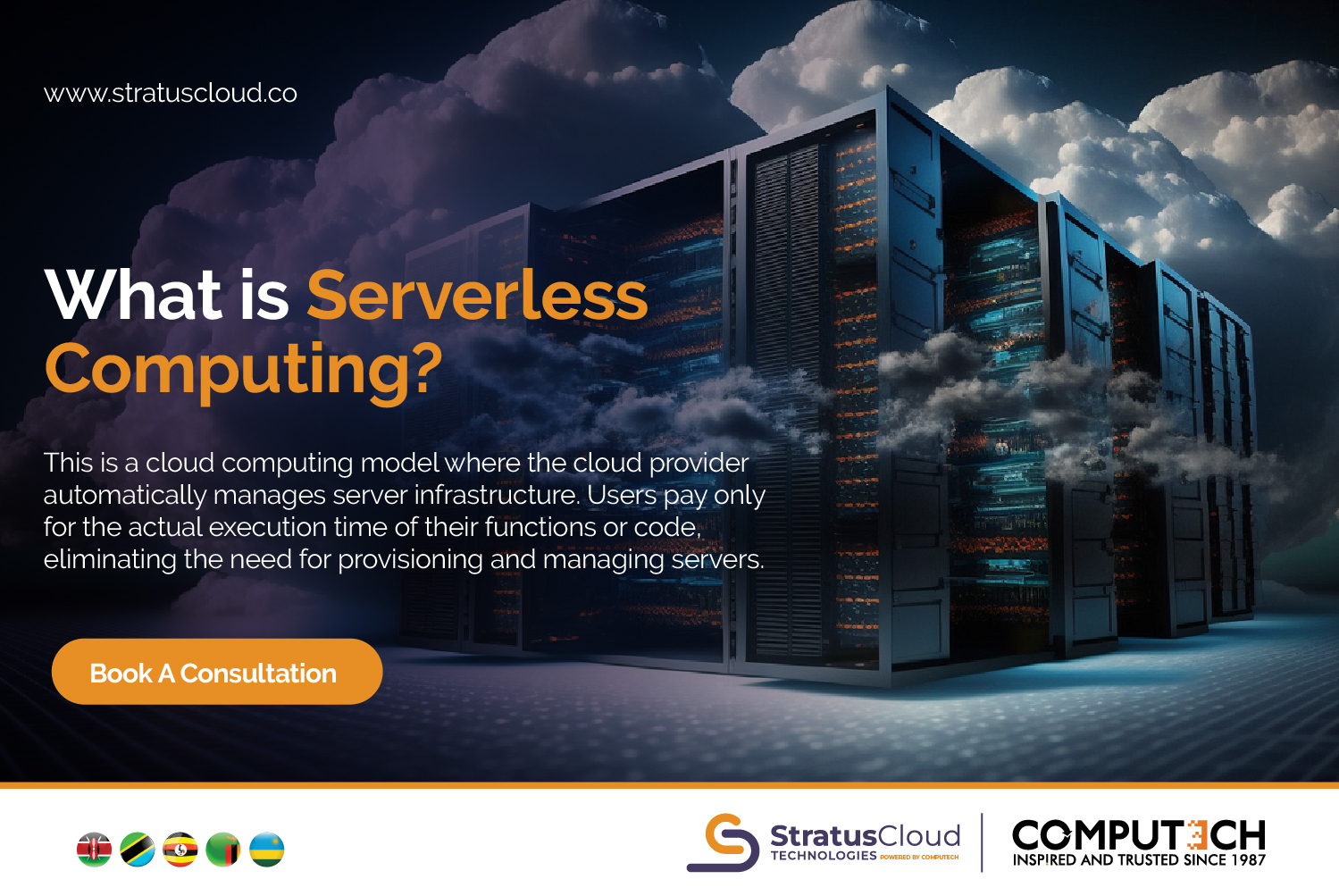
How Cloud Technology Redefines the Future
Serverless computing, also known as serverless architecture or function as a service (FaaS), is a cloud computing model where the cloud provider manages the infrastructure and automatically allocates resources as needed to execute and scale applications. It is a method of providing backend services on an as used basis. A company that gets backend services from a serverless vendor is charged based on their computation and do not have to reserve and pay for a fixed amount of bandwidth or number of servers, as the service is auto-scaling.
Note that despite the name serverless, physical servers are still used but developers do not need to be aware of them. Serverless computing allows developers to purchase backend services on a flexible ‘pay-as-you-go’ basis, meaning that developers only have to pay for the services they use. This is like switching from a cell phone data plan with a monthly fixed limit, to one that only charges for each byte of data that actually gets used.
Serverless means that the developers can do their work without having to worry about servers at all.
Book your free consultation here
Aspects of Serverless Computing
- Event-Driven Architecture: Serverless applications are typically event-driven. They are triggered by events such as HTTP requests, database changes, file uploads, or scheduled tasks. When an event occurs, the serverless platform automatically scales up to handle the event and executes the associated function.
- Pay-As-You-Go Pricing: With serverless computing, you pay only for the compute resources and execution time used during the function execution. This pay-as-you-go pricing model can be more cost-effective, especially for applications with irregular workloads or those that don’t require 24/7 availability.
- Scalability and Auto-Scaling: Serverless platforms handle the scaling of functions automatically. They can scale up or down based on the number of incoming requests or events. This automatic scaling ensures that the application can handle varying workloads without manual intervention.
- Statelessness: Serverless functions are designed to be stateless, meaning they do not maintain any state between invocations. Any required state information must be stored externally, such as in a database or object storage service. This statelessness simplifies the management of serverless applications.
- Microservices Architecture: Serverless computing promotes the use of microservices architecture. Functions can be developed, deployed, and scaled independently, allowing developers to create complex applications by composing multiple serverless functions.
Advantages Of Serverless Computing
- Simplified Development: Serverless platforms abstract away the complexity of server management, allowing developers to focus solely on writing code. This simplicity accelerates the development process and enables developers to iterate and deploy applications faster.
- Automatic Scalability: Serverless platforms automatically scale functions in response to incoming requests or events. Developers don’t have to worry about provisioning or managing servers to handle varying workloads. This automatic scaling ensures that applications can handle a large number of concurrent users without manual intervention.
- Cost-Efficiency: With serverless computing, you only pay for the compute resources and execution time used during the function execution. Since functions can scale to zero when there are no incoming requests, you don’t incur costs for idle resources. This cost-effective model is particularly advantageous for applications with irregular workloads.
- No Server Maintenance: Serverless platforms handle all the server maintenance tasks, such as patching, updating, and monitoring. Developers are freed from the operational overhead of managing servers, allowing them to focus on writing code and building features.
- High Availability: Serverless platforms are typically designed to be highly available. Functions are automatically deployed across multiple data centres, ensuring redundancy and fault tolerance. In the event of a failure, traffic is redirected to healthy instances, providing a reliable user experience.
Book your free consultation here
